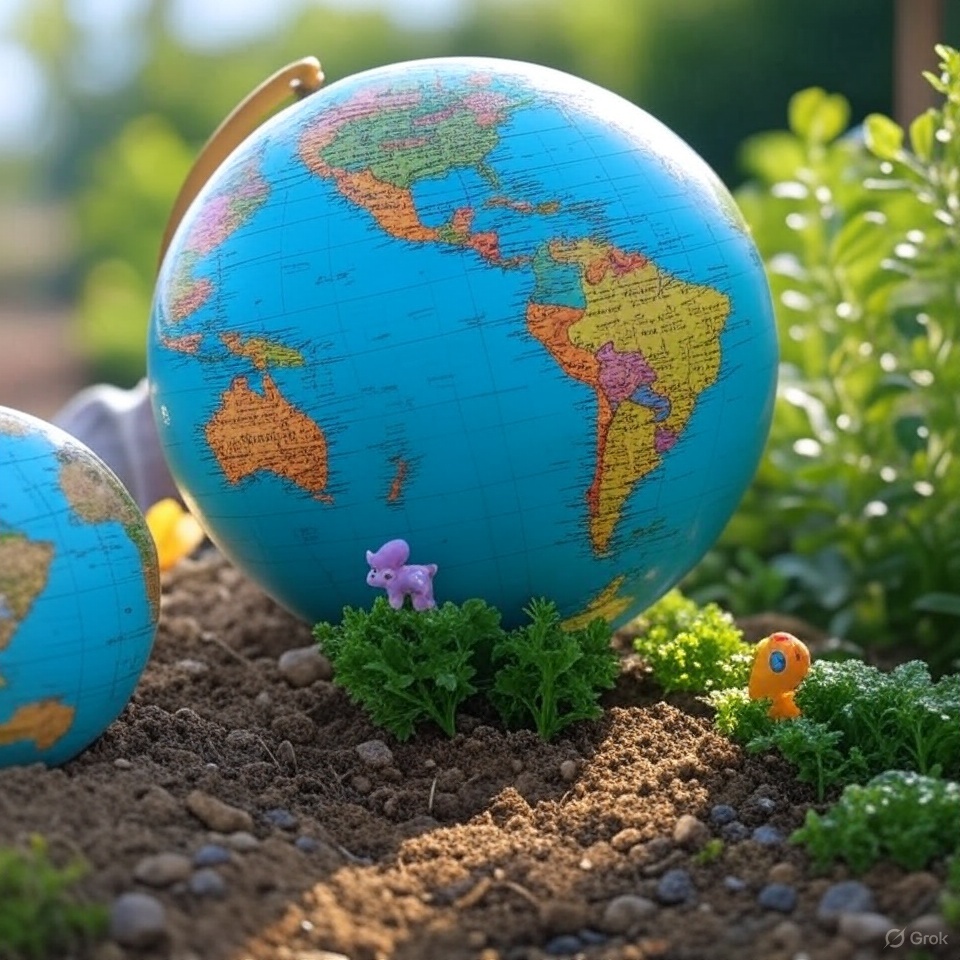Soft World Map Snuggle 🌎
🎯 Target Skills
- Tactile exploration
- Early language (names & sounds)
- Object recognition
🧰 Materials
- Soft world map blanket or rug
- Small stuffed animals or toys
- Photos of places/animals from around the world
- Household alternatives:
- Use a bath towel with drawings for continents
- Print a simple black-and-white map and color it
- Use cardboard cutouts shaped like continents
- Use pillows to represent different “countries”
👣 Step-by-Step
- Lay out the soft map or alternative on the floor 🧺
- Place stuffed animals or toys on different parts of the “map” 🐻
- Say things like “This is the lion, it lives in Africa!” 🦁
- Let your toddler crawl or toddle over and touch each toy
- Gently guide their hand and say the name of the place again 🌍
- Point to different colors or shapes and describe them simply
- Show a photo of the real animal or place from a book or printout
- Finish with a fun song about the world (like “It’s a Small World”)
🤗 Parent/Caregiver Guidance
Use lots of expressive tone and positive reinforcement like “Wow! You found the lion in Africa!” Focus on naming and repeating with joy. Let your toddler lead—wherever they go on the “map,” that’s the journey! 😊
🧠 Why This Helps
This activity boosts early language by connecting words to tactile experiences. It also introduces spatial concepts and builds curiosity about the world through sensory play. At this age, repetition and warmth are the best teaching tools.
📚 Research Foundation
- Piaget’s Sensorimotor Stage: toddlers learn through touch and movement
- Language acquisition research (Hart & Risley, 1995): exposure to rich vocabulary matters early
- Montessori principle: hands-on exploration builds early cognitive skills
Weather Around the World ☀️🌧️
🎯 Target Skills
- Sensory exploration
- Listening and language skills
- Understanding routines and weather cues
🧰 Materials
- Spray bottle with water
- Fan or hair dryer (on cool)
- Soft scarf or paper “snowflakes”
- Household alternatives:
- Ice cubes for “cold” weather
- Blanket for pretend clouds
- Flashlight for “sun”
- Plastic container to “drip” water like rain
👣 Step-by-Step
- Tell your child “Let’s pretend to visit places with different weather!” 🌦️
- Spray water in the air: “It’s raining in London!” ☔
- Turn on fan: “It’s windy in Chicago!” 🌬️
- Wave scarf: “Snow is falling in Antarctica!” ❄️
- Use flashlight: “The sun is shining in Brazil!” ☀️
- Repeat with different combos and silly sounds
- Let your toddler touch and react to each weather
- Finish with cuddles and a weather-themed lullaby
🤗 Parent/Caregiver Guidance
Use excited expressions and clear cues—“Ooooh it’s cold!” or “Splash! Splash!” Let your child play and react in their own way. The more exaggerated and fun you make it, the more they learn. 🌈
🧠 Why This Helps
Weather play introduces real-world concepts in a sensory way. Toddlers learn cause and effect, and begin to connect words to sensations. It’s a gentle way to introduce global thinking—everywhere has weather!
📚 Research Foundation
- Lev Vygotsky’s theory of language in play-based learning
- Sensory integration research (Ayres, 1972)
- Attachment theory: bonding moments during learning increase retention
Rolling Around the Globe 🧺🌍
🎯 Target Skills
- Gross motor skills
- Spatial awareness
- Body coordination
🧰 Materials
- Large soft ball or inflatable globe
- Obstacle-free floor space
- Household alternatives:
- Pillow or rolled-up towel
- Beach ball with continents drawn on
- Plastic laundry basket as a pretend “boat”
- Cardboard box for climbing “mountains”
👣 Step-by-Step
- Place the ball in front of your child and say, “Let’s roll around the world!” 🌍
- Gently roll it toward them and help them push it back
- Say where the ball is going: “Now we’re in Australia!” 🐨
- Encourage crawling or waddling toward the ball
- Place the ball in “mountains” (pillows) and say “Let’s climb!”
- Spin the ball and name a country or animal each time
- Let your toddler push it through “rivers” made with blankets
- Celebrate with claps and silly dances after each “trip”
🤗 Parent/Caregiver Guidance
Follow your child’s movement style—whether crawling, walking or bouncing! Narrate their actions with joy: “You climbed over the mountain!” Encourage curiosity and offer hugs and high-fives! 🌟
🧠 Why This Helps
Movement-based geography play supports body awareness and global thinking. Toddlers are learning through action, and when tied to joyful interactions and repetition, it builds stronger memory and vocabulary.
📚 Research Foundation
- Embodied cognition theory (Thelen & Smith, 1994)
- Montessori emphasis on movement-based learning
- Gross motor development research from the CDC
.svg)
